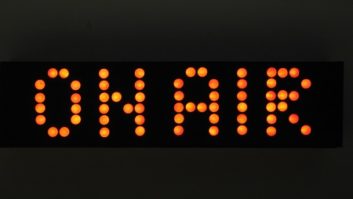NORWICH, England Digital Radio Mondiale is moving beyond medium-wave/AM and shortwave.
Members of the DRM Consortium plan to extend their system to operate on frequencies of up to 120 MHz, including FM broadcast frequencies in VHF band II, 87.5 to 108 MHz.
The March decision followed rumors that individual DRM member companies were investigating the possibility of an enhanced specification.
Firmly established
The DRM Consortium has begun work on its band extension project. The various design, development and testing phases needed to finalize the revised specification are expected to take three and five years, meaning a launch date for the new standard of sometime around 2008 to 2010, according to DRM proponents.
The International Telecommunications Union, International Electrotechnical Commission and European Telecommunications Standards Institute have endorsed the DRM standard as currently defined, for use in the broadcasting bands below 30 MHz, which encompasses shortwave, medium-wave/AM and long-wave.
The move brings DRM into direct competition with the more established Eureka-147 DAB system, operational since the 1990s. More than 1.5 million DAB-capable receivers have been sold in the United Kingdom, and more than 150 DAB receiver models are on the market according to the Digital Radio Development Bureau, a marketing group in the United Kingdom.
DAB is another system endorsed by the ITU, developed to work in the broadcast bands between 30 MHz and 3 GHz and able to work in VHF band II.
Though suited to national network and other wide-area broadcasting, as a multiplex system, DAB can be somewhat inflexible and expensive for individual services with specific targeted or small-scale coverage requirements, because all broadcasters in such a market share transmission facilities and all have equal coverage areas and power levels, one of the reasons the Eureka-147 technology was rejected by U.S. radio in favor of IBOC.
The term “small-scale” in this story refers to a power level/coverage area that would be comparable to that achievable with the old Class D license or the current LPFM licenses in the United States. In the U.K., the regulator can tie a licensee to a specific format or targeted audience. Expenses would be a factor in some of these stations not choosing to use DAB; but serving a specific geographic area or specialized audience is likely the larger issue, experts say.
The DRM consortium members and the World DAB Forum, the marketers of the Eureka-147 system, believe their technologies are compatible for worldwide use and hope to convince receiver manufacturers to make radios that can decode signals from both systems.
On the transmission end, proponents of both systems hope to provide solutions – perhaps employing both on adjacent frequencies in the same bands – in the various markets planning to migrate to digital platforms.
In particular, part of the thinking behind the move to expand the capabilities of DRM is to improve the digital opportunities for small-scale and local broadcasters for whom the Eureka-147 DAB standard is not particularly appropriate.
Proponents of the two standards, the WorldDAB Forum and the DRM Consortium, announced plans to cooperate at the IFA consumer electronics show in Berlin in 2003 and now hold joint meetings on key technical and commercial topics.
According to DRM Chairman Peter Senger, broadcasters and regulators in many countries are examining the available digital options, in search of systems that fit their own specific technical and market criteria.
Senger said Eureka-147 DAB has established itself as a successful solution for the higher-frequency bands in many countries, and broadcasters increasingly are implementing DRM for medium-wave and shortwave broadcasting.
“DRM expansion into the broadcasting bands up to 120 MHz will supplement these existing solutions, ” Senger said.
Technology overload
According to Annika Nyberg, president of the WorldDAB Forum, cooperation between the two groups means they both “pave the way” for the future of digital radio.
“DAB digital radio is ideal for broadcasting audio and data services to large groups and we have already seen radio groups migrate their market leading stations to DAB, as well as developing new quasi-national digital-only brands,” said Ian Dickens, chief executive of the U.K. Digital Radio Development Bureau.
“For now,” said Dickens, “DAB spectrum is limited and many smaller FM services have been unable to secure a spot on a digital platform. DRM could allow such broadcasters to make the transition while, at the same time, bringing new ‘long-distance’ stations in from Europe.”
From a consumer perspective, there is a risk of technology overload with so many new content-delivery methods reaching the marketplace such as satellite, the Internet, mobile phones and Digital Multimedia Broadcasting, on-demand podcasts and audio services delivered via television networks.
Greater choice
Another result of the collaboration between DRM and DAB is the increased likelihood that receiver manufacturers will opt to develop designs that feature multiple reception methods.
According to Dickens, from a consumer perspective, a combination of DAB and DRM would mean more choice.
“A radio that delivers DAB, DRM, FM, AM and, potentially, DMB, would provide listeners with the best of all worlds,” he said.







